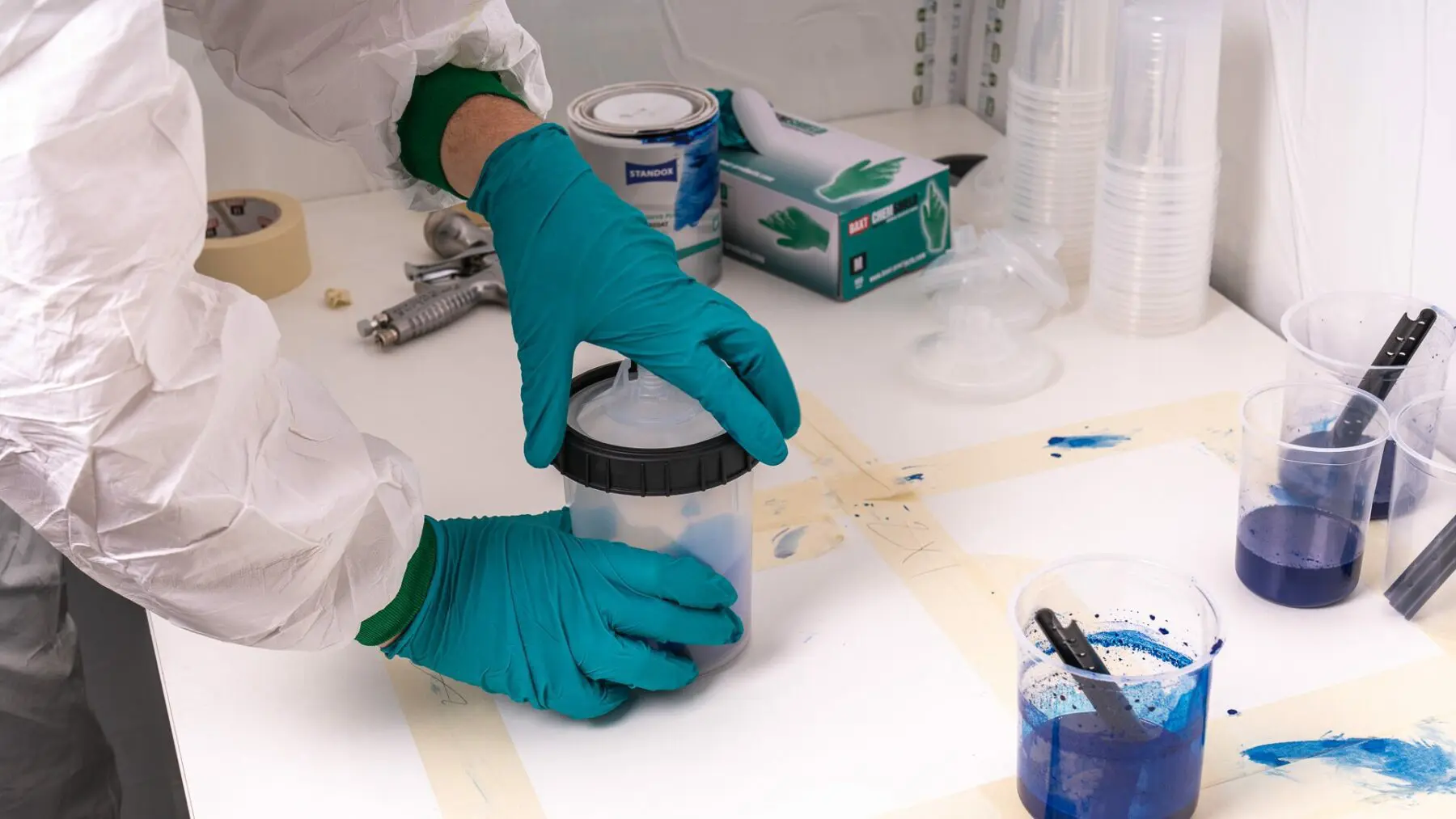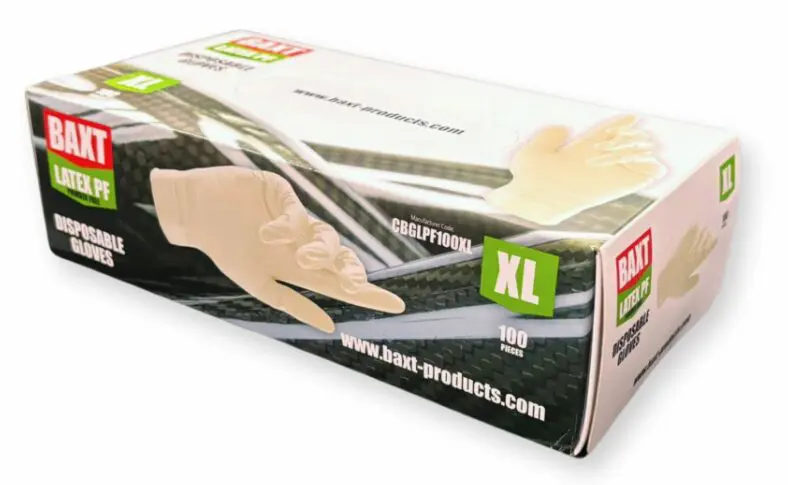
Choosing the right disposable gloves for your operators can be challenging, given the wide range of options available. There is no single “best” glove for every situation, so it’s essential to consider a few key factors before making your choice:
- Material type (Latex vs Nitrile vs Vinyl)
- Cost
- Chemical resistance
- Durability
- Dexterity
- Environmental impact
Types of Disposable Gloves

1. Nitrile Disposable Gloves
Nitrile gloves are made from synthetic rubber and contain no latex proteins, making them hypoallergenic and safer for those with latex allergies.
Key Benefits:
- Superior resistance to oils, solvents, and chemicals—ideal for paintshops
- Highly puncture resistant, suitable for composites work
- Increasingly dextrous though traditionally slightly less flexible than latex
Recommended Nitrile Products:

BAXT CARBONgrip Premium Nitrile Glove
Features
5-layer construction, textured finish, extra-long cuffs
Best Use
Long shifts requiring durable protection
These are the perfect glove for longer shifts or where an operator is required to wear PPE for long periods of time and needs long-lasting protection without needing to change gloves.

BAXT CHEMshield
If chemical or solvent resistance is the main consideration, then the BAXT CHEMshield is a great choice. With a thicker than standard construction and a roughened palm, these gloves offer excellent grip and long-lasting protection.

BAXT DEEPblack
Features
Cost-effective, good chemical resistance, roughened palm
Best Use
Frequent glove changes, budget-conscious
If your operators are going to be changing gloves frequently and budget is a key consideration, the BAXT DEEPblack gloves are the gloves to choose. With excellent chemical and solvent resistance and a roughened palm, these gloves offer the ultimate protection at an affordable price point.

2. Latex Disposable Gloves
Latex gloves were once the most common choice but have declined due to allergy concerns. However, they still offer excellent flexibility, comfort, and tactile sensitivity.
Key Benefits:
- Superior dexterity and comfort for manual tasks
- Made from natural latex rubber, biodegradable in around 5 years (depending on disposal conditions)
- Less chemical resistant than nitrile
Powdered vs Powder-Free
Powdered
Easier to don and doff, absorbs sweat making it great for fast-paced environments

Powder-Free
Avoids residue on surfaces, preferred where cleanliness is critical


3. Vinyl Disposable Gloves
Vinyl disposable gloves are an economical choice suited for low-risk tasks that require frequent glove changes.
Key Benefits:
- Very cost effective
- Good for short-duration, low chemical exposure jobs
- Not recommended for high-risk or chemical-intensive work
Summary: Which Disposable Gloves Should You Use?
Product
Features
Best Use
Nitrile
Protection, chemical resistance, durability
Slightly less dextrous, higher cost
Latex
Comfort, dexterity, and biodegradability
Allergy risk, less chemically resistant
Vinyl
Budget and short-term use
Lower protection, not for chemicals
Final Takeaway
- Choose nitrile gloves for superior protection, durability, and chemical resistance—ideal for paintshops and composites.
- Choose latex gloves if environmental impact and comfort are priorities, but ensure allergy safety.
- Choose vinyl gloves when cost is a key factor and chemical exposure is minimal.
Related Products
-
 BAXT DEEP Black Nitrile Glove£13.14 Incl. VAT£10.95 Excl. VAT
BAXT DEEP Black Nitrile Glove£13.14 Incl. VAT£10.95 Excl. VAT -
 BAXT CHEMSHIELD Green Nitrile Glove (100)£26.34 Incl. VAT£21.95 Excl. VAT
BAXT CHEMSHIELD Green Nitrile Glove (100)£26.34 Incl. VAT£21.95 Excl. VAT -
 BAXT CARBONgrip Premium Nitrile Gloves (50)£11.98 Incl. VAT£9.98 Excl. VAT
BAXT CARBONgrip Premium Nitrile Gloves (50)£11.98 Incl. VAT£9.98 Excl. VAT




